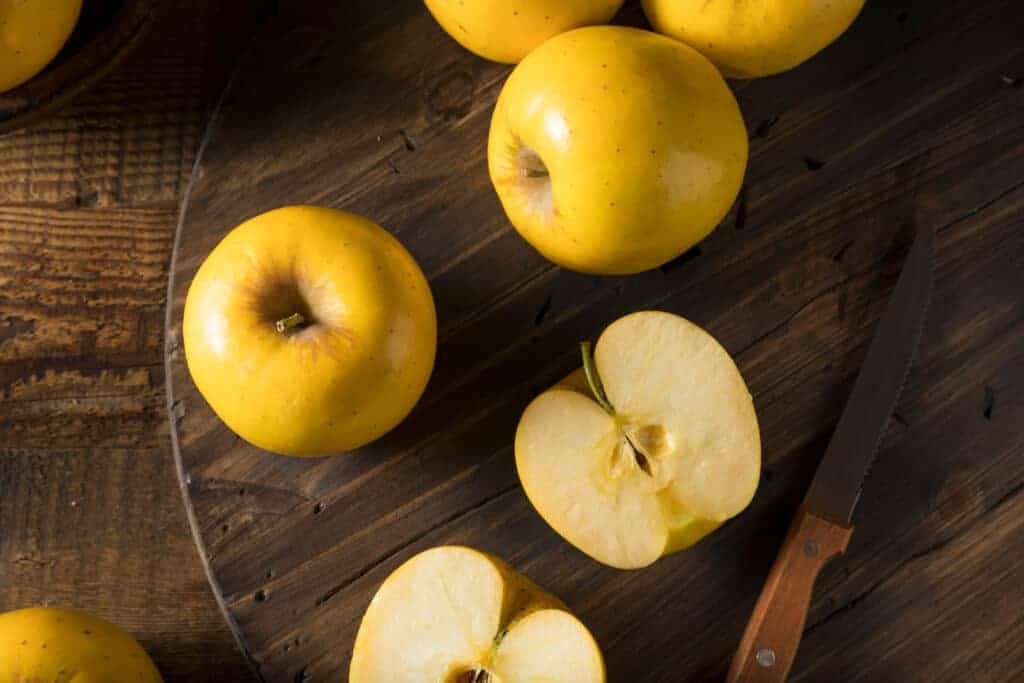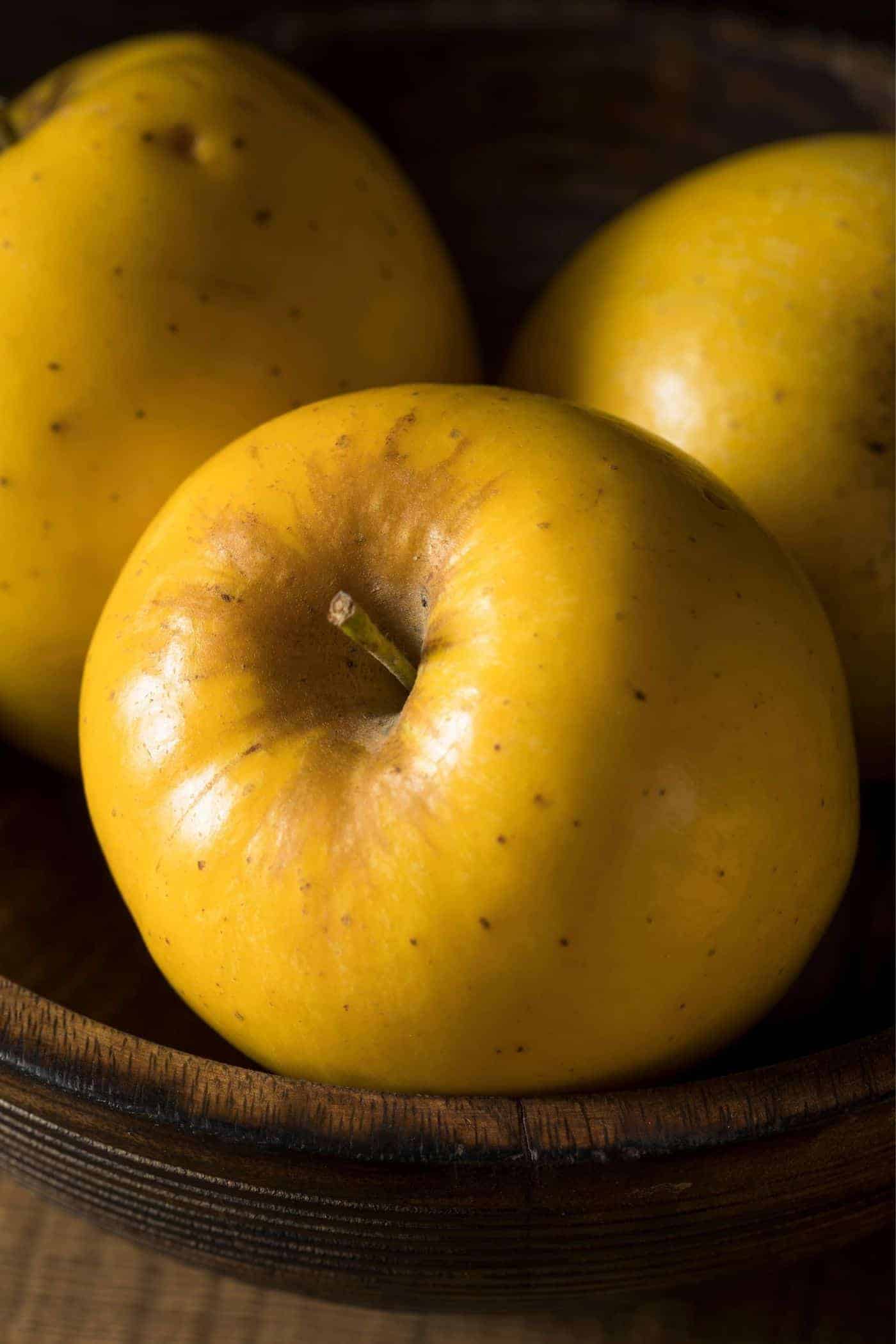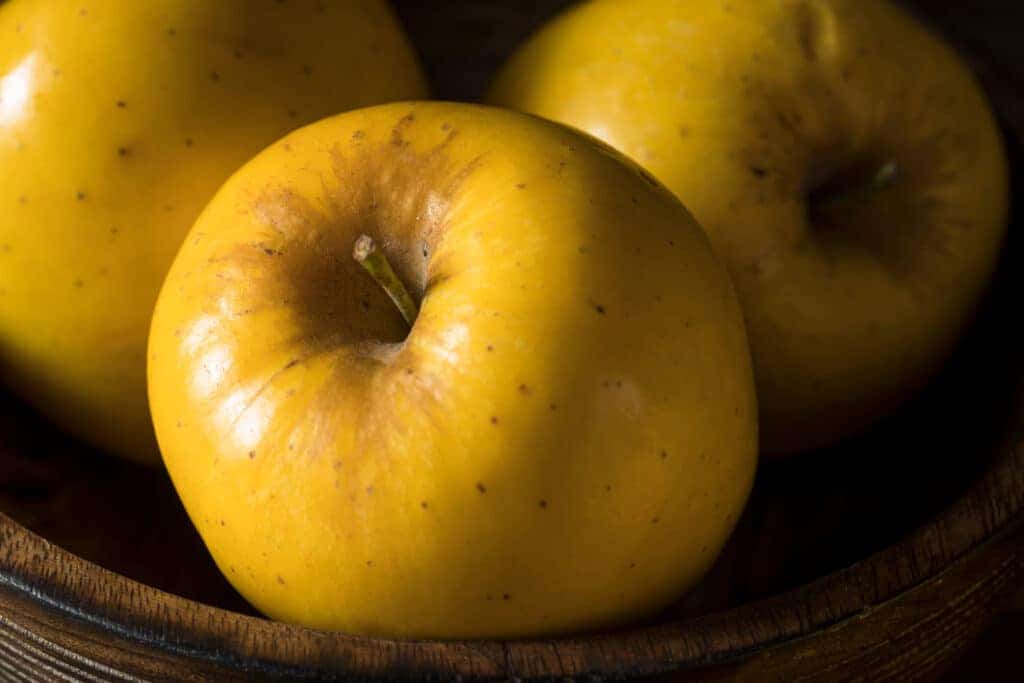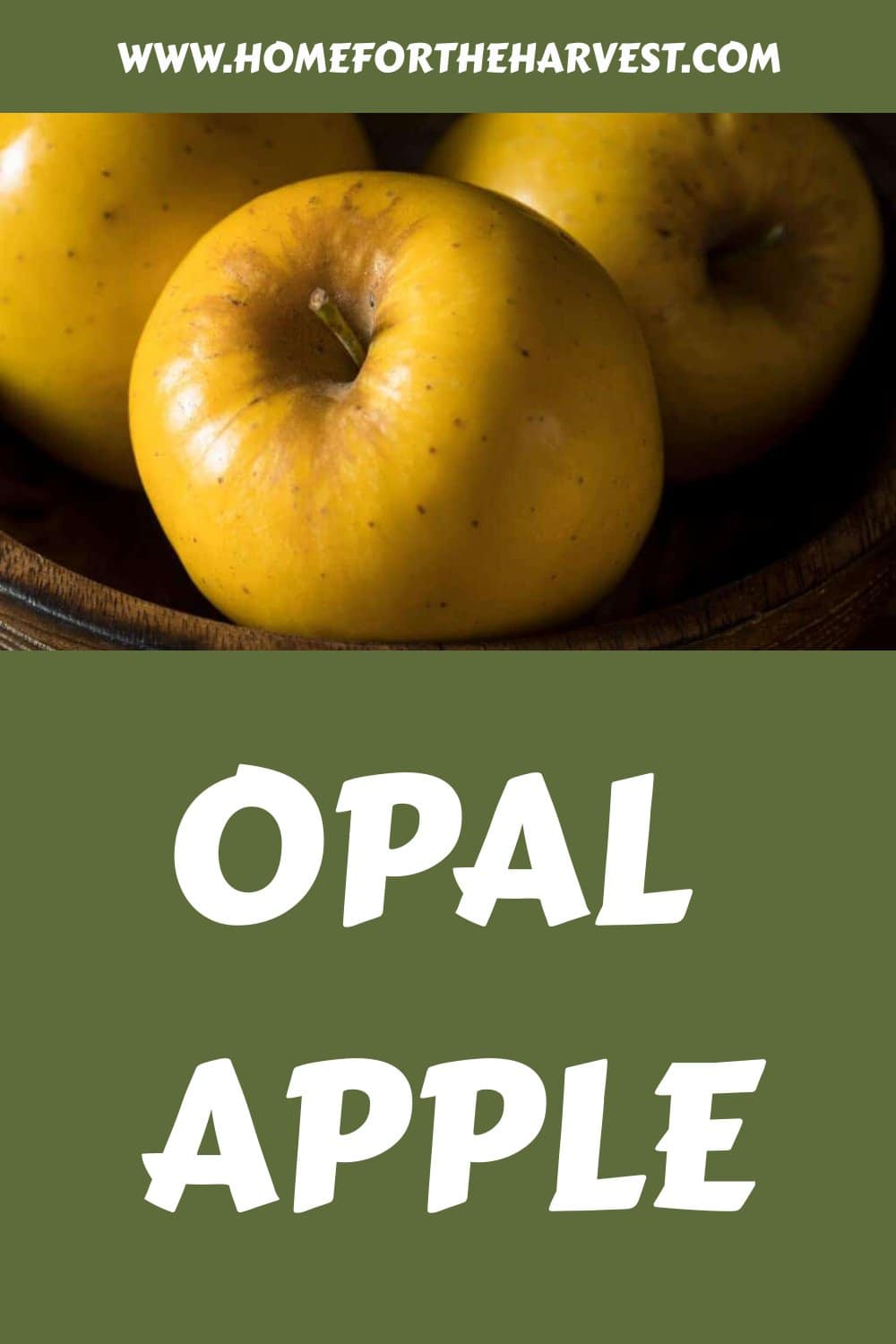The Opal apple is a modern European apple cultivar with a yellow-gold peel, sweet flavor, crisp texture, and floral aroma. Opal is a club apple and was the first apple verified as GMO-free. These apples naturally resist browning after being cut or sliced, and the plants are resistant to apple scab. The Opal® was bred in the Czech Republic in 1991 by Dr. Jaroslav Tupý and introduced in 1999.
Opal apple basics
The Opal apple is a delightful dessert apple originating from a breeding program in the Czech Republic that combined ‘Golden Delicious’ and ‘Topaz’. Recognized for its sweet, aromatic flavor and firm, juicy texture, the Opal stands out with its yellow-orange flesh and a unique absence of greasiness on its skin after storage.
It’s globose to slightly conical shape, adorned with either a faint orange blush or no overcolor at all, and its excellent keeping quality—remaining tasty for up to six months in storage—make it a favored choice. Additionally, its resistance to apple scab and good production traits ensure it’s not only a treat for the taste buds but also a resilient variety for growers.
The crunchy texture is not the only outstanding factor about this apple. When cut, the fruit will not turn brown over time. This makes opal apple slices the perfect snack to pack in the morning and bring to work or send with the kids to school. They are also great for putting in salads or similar recipes for this reason.
Opal apples are non-GMO certified. This is a huge selling point for many people, even though GMO apples are relatively rare still. While there are now other apple varieties that have become non-GMO verified, Opal apples were the first apple variety to earn this official title.
Development
Opal Apples were first bred in 1991 by Dr. Jaroslav Tupý near Prague, Czech Republic (source: Opal Apples). The variety was introduced in 1999 and commercial planting began in 2010. Opal apples are now grown throughout Europe, Australia, New Zealand, Chile, South Africa, and the USA. American-grown Opal Apples are grown in the Prescott, Washington orchard of FirstFruits Farms (formerly Broetje Orchards).
The Opal Apple is a cross between the famous Golden Delicious apple and the Topaz. Opals have a yellow-gold peel with slight russeting around the stem. The inner flesh is cream-colored with a fine texture. These apples are quite large. A typical fruit weighs 10-14 ounces (about 3/4 of a pound each).

Opal apple flavor profile
Opal apples have a sweet, classic apple taste that is more complex than Golden Delicious, with a depth of flavor that includes a tart finish. These apples have a floral aroma with hints of pear, banana, and coconut. The flesh is fine yet has a crisp texture.
Opal Apples have a bold taste to match their cheerful color. When biting into an opal apple, the crisp freshness of the apple allows the sweet yet slightly tangy flavor to be unleashed. While some yellow apples can seem bland and mushy, the Opal apple has a unique depth of flavor and satisfying crunch.
Growing regions
American-grown Opals are grown in the Prescott, Washington orchard of FirstFruits Farms in Southeastern Washington State. Organic Opal apples are grown in the company’s Wallula, WA orchard, which is less than an hour away.
Opal apples are also grown throughout Europe (UK, Spain, Germany), Australia, New Zealand, Chile, and South Africa.

Harvest season
Harvest season for Opals is generally in early October in the Northern Hemisphere. Opal apples are available to be purchased in stores from late October/November until July. The stock of these apples tends to run out fast, as this is a very popular type of apple.
The stock of Opal Apples grown in the Southern Hemisphere is steadily increasing, with harvest season occurring in late April through early March.
Opal apples cost about $1 each in the grocery store. Most Opal apples are sold in 2lb bags that cost around $3-$4 per bag of 3-4 apples.
These apples are highly popular and only available during certain months of the year. Begin looking for opal apples in October. Depending on demand, they may still be available through July.
When wanting to purchase and enjoy opal apples, it is important to know where to find them. Opal apples are sold in most supermarkets in the United States of America as well as parts of Canada. If you are unsure if your local supermarket sells opal apples, refer to the link below to find the closest seller of the delicious fruit. Not all US states sell this unique apple.
How to grow Opal apples
Opal apples are exclusively grown by FirstFruits Farms in Southeastern Washington State. They cannot be grown in any other orchard. Individual Opal Apple trees are not yet available for purchase by individual growers or homeowners. Opal is a good example of a “Club Apple” – a variety with tightly controlled distribution in which growers must “join the club” to grow and market the variety.
The technical cultivar name for Opal Apple trees is the apple variety “UEB 32642”. This name refers to the seedling number at the research institute in The Czech Republic.
The patent for the Opal apple is expected to expire in June of 2024, and it is possible that home growers might be able to grow their own trees after this upcoming date. Potential pollinators for Opal include Macoun, Liberty, Golden Delicious, and Grimes Golden.
Storage
Opal apples can be kept in the refrigerator for up to three months. Store them in the fridge as soon as you get home. Place them in the fruit crisper drawer, leaving out any apples with peel damage. Opal apples can keep in the fridge for 1-2 months.
Recipes
As previously mentioned, Opal Apples do not turn brown soon after they are cut or sliced. This makes them one of the best choices of apples for many different recipes.
- Opal Apple Crostini with Honey, Thyme Goat Cheese
- Opal Apple Cranberry Chutney on Baked Brie
- Opal Apple, Kale, & Pomegranate Salad
- Opal Apple Bacon Bites in Phyllo Pastry Cups
- Opal Apple Pulled Chicken Sandwiches
- Opal Apple and Pecan Stuffed Pork Chops







